When I first started putting my thoughts togther on this article, it had only been days after a strong storm swept across North Dakota and through much of northern Minnesota (June 20). Winds were clocked at well over 100 miles per hour and it was reported winds in Jamestown stayed at 80-90 mph for over one hour. Lives were lost. Three trains were knocked sideways off of their tracks. Grain bins were crumpled in on themselves as if a giant hand had punched them.
As is often the case when a severe weather event like this occurs, the people in the region immediately started doing what they could to help each other. Some individuals are more able than others to wield chain saws or engage in storm cleanup. But that didn’t stop folks who were less mobile or less comfortable with heavy work from offering food, shelter and a shoulder to cry on.
People in local and rural communities are, on the whole, quite resilient and willing to lend their strength to others when it is needed. Actually, there is plenty of evidence that people in the broader community of the United States or the rest of the world are also quite willing to lend a hand. How else do you explain firefighters from Australia helping in Canada, from Canada helping in California, and from California helping in Australia (as a for instance)?
Tammy and I had our first experience helping people after a natural disaster when New Ulm (Minnesota) was hit by a tornado in March of 1998. We were among the busloads of people who came up from Mankato to do whatever we could. We expected nothing in return and wanted nothing in return. We simply knew that we wanted to show up and help those who were hurting.
The August 2020 Midwest Derecho
Tammy and I were on edge most of the day on August 10, 2020. We kept looking out the windows when we were inside and we often inspected the sky when we were outside. We could feel that something big was in the works. Our occupation as farmers put us outside in all weather, so we were familiar with the signs that portended something big and bad on the horizon. We also knew enough to avail ourselves of forecast and meteorological tools - and the analysis of experts.
The signs were there. A storm was brewing.
The good news? We could see that it wasn't likely heading to our farm. Each time we checked, there was nothing that required action on our part. We were spared from directly experiencing the damaging storm known as a 'derecho.'
According to NOAA (US National Oceanic and Atmospheric Administration), derechos are a straight-line windstorm, unlike a hurricane that is cyclonic (it spins counterclockwise). Derechos, like hurricanes, can spin off tornadoes as part of the system. The National Weather Service will identify a storm as a derecho if it has sustained winds of at least 58 mph and leaves a path of damage for at least 250 miles.
In other words, there are derechos, and then there are Derechos, with a capital “D.”
The 2020 Midwest Derecho was one of the exceptional ones.
Happily for Tammy and I, we only lost cell and internet service. Otherwise, the storm stayed about a 40 minute drive south of us.
The graphic above was posted on August 12, 2020 by KWWL, a local (to us) television station. There were multiple triple digit readings throughout the state.
The craziest part was the duration of the high winds. In Iowa, we are used to storms that pack a wallop, but that wallop is short-lived. They roll around the corner, smack you once real hard and then continue on their way.
Derecho winds? They stand you up in that corner and proceed to hit you repeatedly with a steel pipe. And they don’t care if you’re already knocked out. They’ll bludgeon you until they’ve decided the pipe has had enough.
Power is a pretty big deal for people at this time in history. Even if you are philosophical about the loss of electricity (after all, we survived many many generations without it), you should consider that power loss is a symptom that indicates lots of other damage.
My family, who live northeast of Des Moines, were in the path of the derecho - losing electricity for an extended period of time. They lost the food that was in their refrigerator and chest freezer. Many other people also lost stores of food. But it’s a loss that often goes unaccounted for. They also lost several trees and dealt with some damage to their home.
The good news is that, while these were not wonderful things to have happen, they did have support and they were able to, in this case, literally weather the storm.
Not everyone was as fortunate.
Our friends at Pheasant Run Farm offered an agri-tourism event called 'Sunflower Experience' that was very well received. The field above WAS a field of sunflowers at their peak. Needless to say, they were forced to announce that the Sunflower Experience had ended for the season. They also sustained damage to buildings and other crops at their farm, some of which were still being repaired into the next year.
Throughout the state, there were fields of corn and soybeans that were just as flat as this field of sunflowers. Vegetable growers in this storm’s path fared no better. Commodity crop growers typically acquire subsidized insurance that is built for row-crop growing systems. Growers on a small diversified farm such as ours or Pheasant Run typically have limited affordable options for insurance.
The 'time elapse' image above shows the progress of the derecho in 2020. For the most part, northern and southern Iowa did not experience the storm directly. Our farm only recorded .07" of rain during this period and only had winds gusting to about 30 mph - not even as much wind as we experienced in recent thunderstorms that visited our farm.
Another image that tells the story is the satellite image shown above. The lightened swaths in the center of the state show fields where the crops and trees were flattened. These areas represent over 10 million acres of crops. Crops, such as corn, need not be toppled completely (as these fields likely were) to be at least a partial loss. If they are leaning, it may become impossible to harvest with a combine.
Once the year was over, it was estimated that the state’s overall yield for commodity crops was nearly halved. About 100 million bushels of storage facilities were destroyed as were processing facilities. So, the damage to Iowa’s existing agricultural system was significant.
But, other damage has been much harder to recover from. Lost trees require decades to replace with a similar sized specimen. I lived in Cedar Rapids for a time and I still barely recognize that city after 65% of its tree canopy was removed by the storm.
And then there is the consequences suffered by those who had/have limited resources. Damage to buildings in Cedar Rapids resulted in a doubling of the homeless population as landlords evicted residents from unsafe apartment complexes. Less affluent neighborhoods rarely had access to generators while clean-up and repairs were often delayed. It’s a perverse reality that some of the people who lived in the poorer neighborhoods were employed in jobs that cleaned up the mess in the wealthier areas of town.
Hey, I get it. If it’s your job and that’s how you make your living, that’s what you do. But I also think it’s a good reminder that there are many jobs that should receive better compensation than they do - then maybe their neighborhoods could also be nicer neighborhoods?
I suspect, if someone had the time, resources and inclination to study it, they would find that less affluent populations are still feeling the impacts of a storm that occurred five years ago.
I predict we’ll come back to that point in this article…
We have (had) the tools to respond
The good news is that we actually have people who DO take the time to study the impacts of disasters and evaluate the effectiveness of our responses to those events. As a people, we are not without knowledge and we do have (or did have) tools that can help us. We also have numerous public resources that are there to help us when bad things happen.
Seven that I can name off the top of my head, without much effort are:
NOAA (US National Oceanic and Atmospheric Administration
National Weather Service
Local weather services
FEMA (Federal Emergency Management Agency)
the National Guard
Emergency services and hospitals
Our public and private colleges and universities
There are more, of course, but I need to keep this article short enough that you’ll read it!
NOAA, NWS and local weather services
The first two provide me with a chance for an easy explanation. When it comes to weather and natural events, NOAA and NWS provide the tools that we can all use - including our local weather stations - to pay attention to what is going on around us. For those of you who do not know, independent web sites that provide interesting graphics and visualizations are also dependent on the data and tools provided by these government services.
As farmers, we use the services of NOAA and NWS regularly. And, as persons living in the rural Midwest, we depend on them to provide us with as much warning as is possible when bad weather is looming. Since we cannot spend all of our time viewing the data AND we lack the expertise to interpret it well, this is where local weather stations help - by communicating the danger to all of us.
Yes, I said it. I’m pretty good at seeing what is on the horizon for the weather, but I’m not an expert AND I know it. I have a decent idea of what I do NOT know. And I fully appreciate the training and expertise professional meteorologists have and value their expertise.
FEMA
There are some who have been unhappy with FEMA. But we have to remember that those who avail themselves of FEMA’s services after a disaster are often struggling and in pain. We shouldn’t expect them to be happy because they probably would just rather that the disaster not occurred to them at all. And, of course, not everything is run perfectly - so there is room to improve.
Welcome to being human. At least the soul of a servant lies at the heart of FEMA’s purpose.
Did you know that one of the services provided by FEMA is the Integrated Public Alert and Warning System (IPAWS)? IPAWS integrates the Emergency Alert System (EAS), which delivers alerts over radio and television, with WEA (Wireless Emergency Alerts) that will send alerts to your mobile phone. It also incorporates NOAA’s Weather Radio, which continuously broadcasts weather information and warnings.
Tammy and I have lived in rural areas for much of our lives. We routinely listened to the Weather Radio for years when it was the only reliable method for us to get that information at the farm. TV (or satellite) reception was suspect when the winds rose and we didn’t have reliable cell phone service. But we had the guarantee that Weather Radio would be accessible wherever we were.
Yes. When people attack FEMA, they’re attacking numerous services we all take for granted. Things that we will miss when we need them. If they go away, we will cry and want to blame someone for their absence - not realizing we are responsible for their loss. I guess that’s a human thing too.
The National Guard
The National Guard has proudly served as the nation’s first responders when natural disasters occur. They are able to mobilize and provide services on short notice, including search and rescue, medical assistance and aiding in clean-up. They have aided in fighting wildfires, provided meals and water to persons in disaster areas and helped to clear blocked roads.
I still have memories of seeing (from a distance) National Guards members forming a human chain to move supplies into a shelter in New Ulm. I also remember one of my adult baseball league teammates and National Guard member telling me about an emergency response he participated in. I have respect for what they bring in the face of disaster. It makes a lot of sense to me that we should have these people ready to go when real disasters strike - because they will. And I chafe when I hear that they are being misused.
I didn’t like it when our National Guard were sent overseas to fight and I don’t like it when they are sent to cities where there is no crisis and they were not requested by the local authorities.
These abuses do two things. They sour people’s attitudes with respect to the good people who serve and stand ready to provide aid on a moment’s notice. And they make this valuable resource unavailable in situations where they are requested and desperately needed.
Local EMS, firefighters and hospitals
We should never fail to acknowledge the rapid response of our local emergency services. This includes our EMS, firefighters and hospitals. Even rural areas need these services because, yes, emergencies can happen there too. Don’t try to tell me that the people in rural North Dakota don’t deserve excellent emergency services. While they are quite resourceful individuals, I am sure, that doesn’t mean they couldn’t benefit from reliable emergency response personnel.
I am one of first two people (Tammy was the other) removed from a crushed automobile by the EMS in Chatfield, Minnesota. They had just completed training to use the “jaws of life”not long before our accident. The simple fact that there even WAS EMS in that community is a blessing. It was even better knowing that their community was able to fund-raise and acquire a tool that got us out of the tin can that had once been our vehicle.
Don’t tell me that people are unwilling to support local and rural emergency services. I think they do. When I see the number of people attending the events like the Tripoli Fireman’s Dance, I recognize people who care and want these services to be available to help others. I believe that they are also quite willing to put their fair share into these services via taxes too
Colleges and universities
Perhaps the hardest one to explain is the last one - our post-secondary schools.
So, I’m going to lead with an example.
The Cedar Rapids flood of 2008 is still a milestone event. That flood is the sixth largest FEMA disaster declaration to date, following hurricanes and earthquake and the 9/11 attack. Of course, Cedar Rapids was not the only Iowa community impacted. Iowa City was also impacted. But, since the floods both cities have made efforts to prepare for the possibility of future events.
Some of the responses were informed by research performed by public universities. For example, this 2011 report by Iowa State University can actually provide us with guidance for future disasters. As an illustration, look at table 9 from that report, shown below:
The first thing that stands out to me is that the “most important” issues were different for each community. This is an excellent reminder that all communities have similarities and differences. Certainly, some of the different answers were driven by who responded on behalf of the communities. But if you know these communities even a little bit, the different responses actually make sense.
But before I go much further, let me point out one of the problems for Cedar Rapids. The flood of 2008 led to an increase in mobile homes. Twelve years later, a derecho hit the city. Mobile homes and tornadoes are bad. Mobile homes and derechos would be no better. In other communities, housing for the elderly or handicapped was a key issue. A dearth of rental units was another, as was the need to simply get aid/money into the hands of those who were in need.
Everyone needs some help after a disaster. But people with fewer resources need more help for a longer period of time. This table provides evidence that supports that statement.
In any event, the report has all kinds of useful nuggets. And, looking back, I can see numerous places where communities, sometimes with federal or state support, have done a decent job of responding to the floods and in an effort to mitigate future losses to flooding.
This is one of the quiet ways people in academia serve the greater good of the community. As a person who has been an academic (and is married to one), I can tell you that the natural inquisitiveness and desire to research and learn is a powerful tool we can bring to the community.
You see, we can do it. And we have some decent tools at our disposal.
Sort of.
Frustration with poor management by the current state and federal leaders
Almost all of the things I cited above are public and government funded services. The one that isn’t (local news/weather stations) relies heavily on federal services themselves. These services are evidence that we, the people of the United States, ARE concerned for each other. Concerned enough that we have, over the past 249 years, developed programs, services, and government entities that are dedicated to helping when things go wrong.
This is why it confounds me that there are also many people who support the current administration in the US federal government. It is clear that the people in power are not representative of the greater will of the people to lend a hand when a hand is needed. Instead, they prefer to disable the federal mechanisms that could provide some relief and support to areas that are hard hit by disasters. They send the National Guard to cities that were not experiencing a disaster and did not ask for help - which means they aren’t readily available to provide disaster relief in places like North Dakota. And they fill the upper level government positions with people who are, at best, unqualified and uninterested in learning what they need to know to make their agencies run well.
I suspect part of the problem is that many of us do not familiarize ourselves with the things our government agencies actually do. Instead, we prefer to allow someone else to mislead us with incorrect or incomplete information because it is easier than looking carefully at things. I admit that I am often guilty of this myself.
But I am doing my best to learn and improve.
This brings me to the latest piece of mismanagement by the US Federal Government. The Republican Party is currently in control, so there is no foisting the blame on anyone else right now. It is the Republican Party that is pushing their “Big, Beautiful Bill” that is going to do many destructive things to the services many of us take for granted.
This bill will take away Medicaid from people that need the help of the community - a community that has shown repeatedly that it is WILLING and ABLE to give. It will disrupt and potentially disable emergency services, hospitals and nursing homes - especially in rural areas. And even there are modifications that allow them to survive, many who need their services will not be able to pay for them. It will remove funding that is used to help get healthy food to individuals, including children, that need it.
Meanwhile, it provides tax breaks to the wealthiest individuals. Many of whom think rules don’t apply to them and that you and I are not worthy of being held up by the community of people around us.
It’s going to enable a bunch of inadequate executive branch wannabe leaders to continue to fail to run their agencies well. They’ll keep making poorly informed decisions about the programs and services we want for ourselves AND for others. They will continue to opt for knee-jerk choices in handling the Federal employees that work at these jobs.
Even if some of the ideas in the bill are worthwhile and even if some of the actions taken by current leadership have merit, it matters how this all gets done. So far, it has been done with a bad will and a clear intent to harm others.
I believe you are worth it. I want to fund things that support and provide aid to others. I have a heart to help people that need it and I know that others do too.
The Big, Bad Bill is going back to the House of Representative because the bill just passed by the Senate is not the same as the House version. Let’s show our Representatives where our hearts truly lie. If they insist on passing this bill, we must remember what they have done to us and our community of helpers. And we must replace them with an overwhelming vote that cannot be questioned.
Thank you for taking the time to consider my words. I hope you have a fine remainder of your day and an excellent week to come.




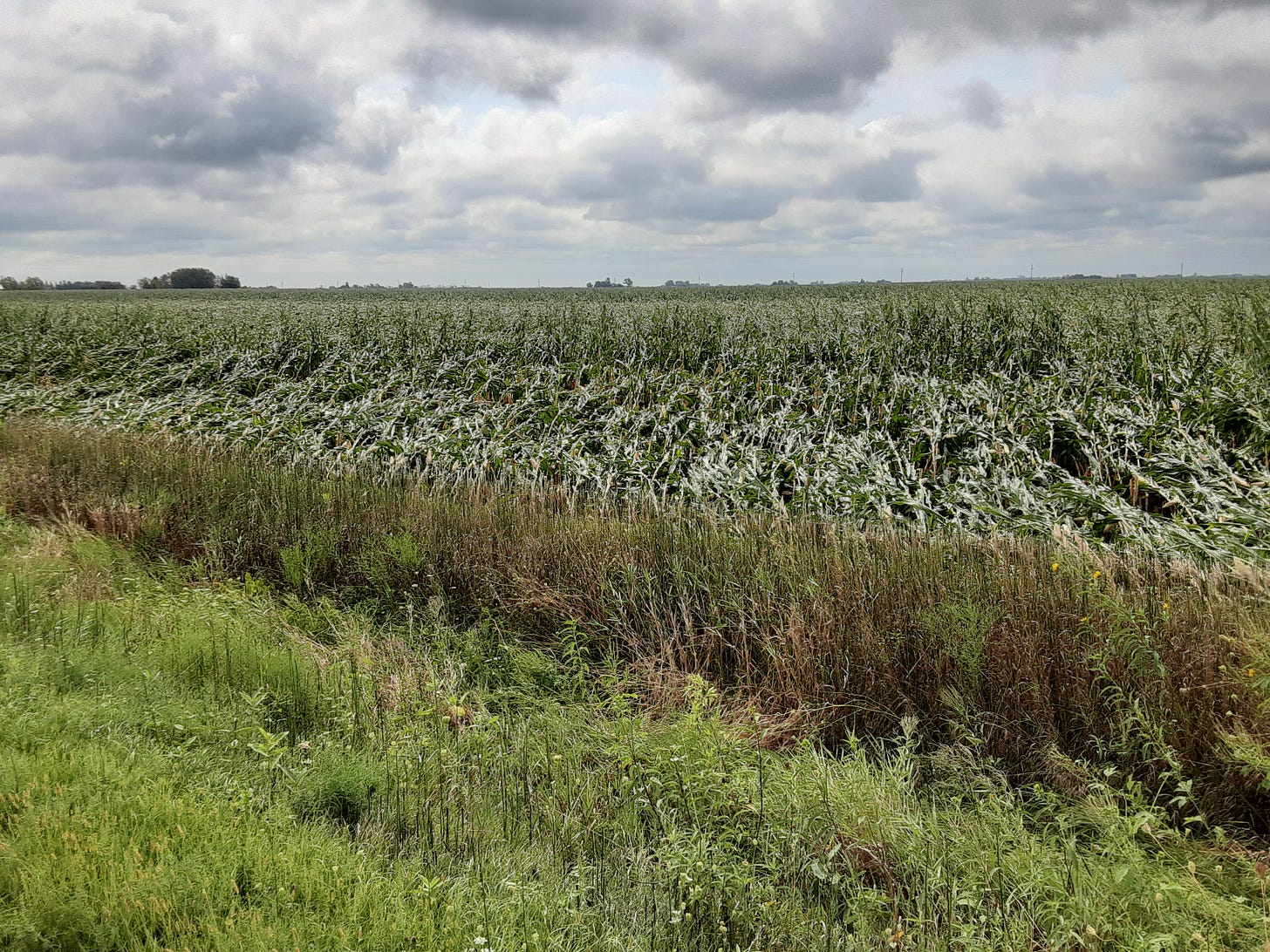
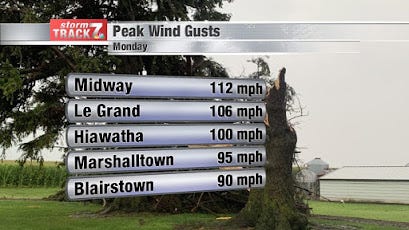
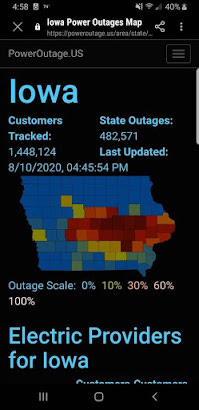
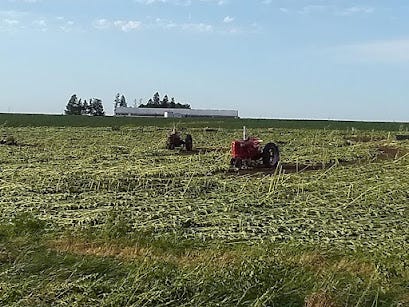

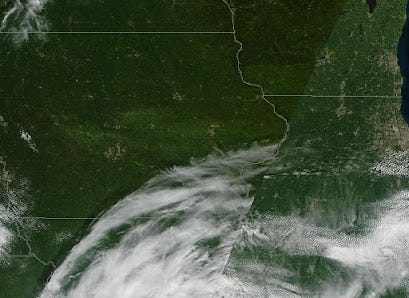


Thank you Rob! I worked outdoors most of my life as a wildlife biologist, and was also a weather spotter for my county ESDA office for over a decade. I certainly understand both "knowing something big is coming" and availing ourselves of the science, technology, and communication tools that are now available to us. I certainly wish I shared you optimism about future election integrity, even though I am nowhere near giving up.
Threats are being made daily.
"Support me completely or face the consequences."
Some are content with what's happening, some are oblivious. But some are alert, and some of these are able to articulate the significance and consequence. Many of us, like me, are dependent upon those in the last category, like you Rob, to keep the rest of us engaged and vocal. Thanks.